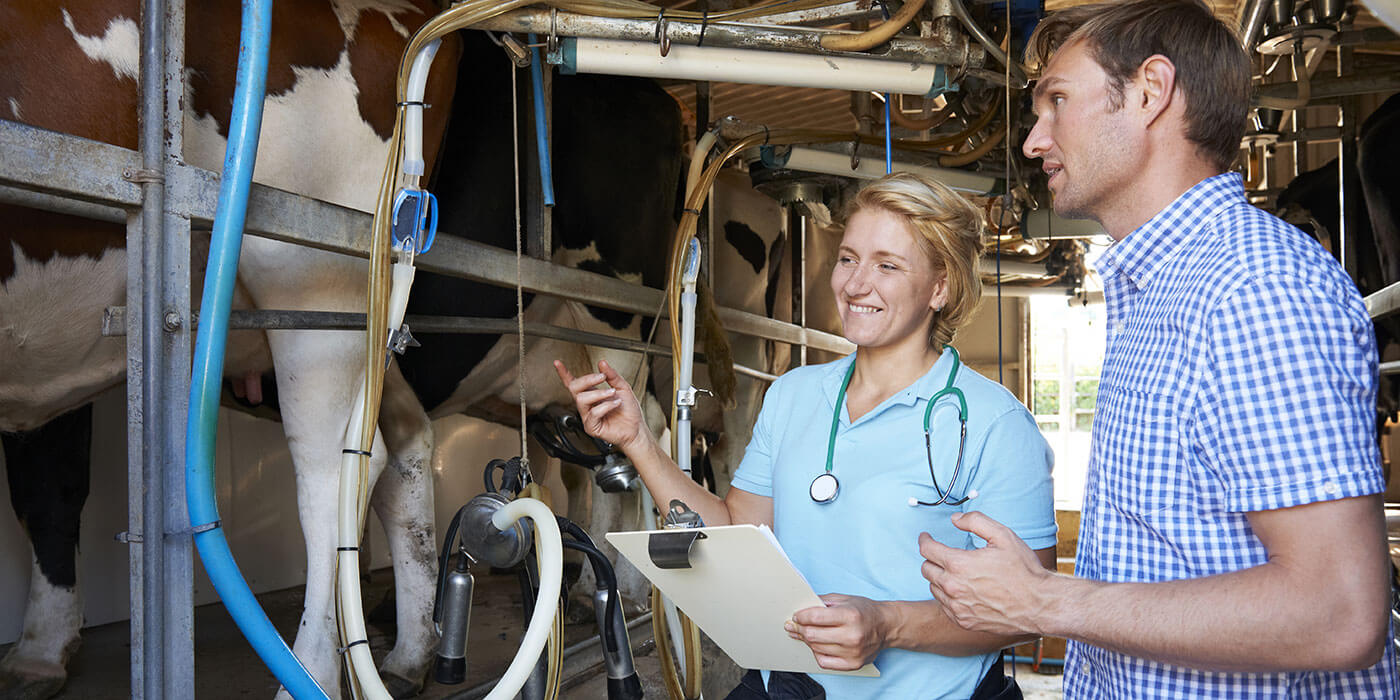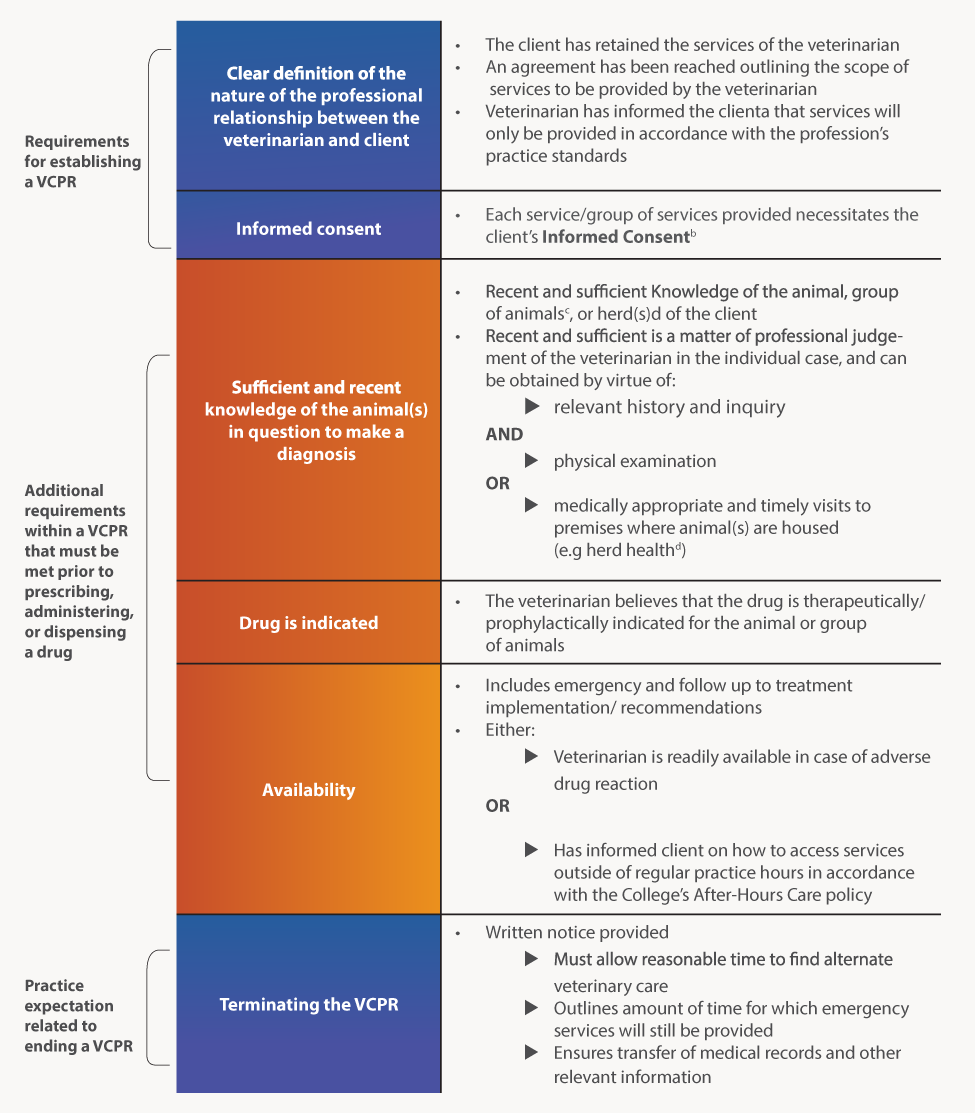Veterinarian-Client-Patient Relationship (VCPR) in Ontario
FAASTsheet 05 /
A valid VCPR must be established prior to a veterinarian treating or providing services to a client and their animal(s). Exceptions may apply in specific circumstances (see below). Services include providing animal health recommendations, prescribing, dispensing or administering drugs.
This document is meant to provide Ontario farmed-animal veterinarians with an overview of the requirements for establishing, maintaining, and terminating a VCPR. These regulations are set out by the College of Veterinarians of Ontario, as such please visit www.cvo.org for the most current and up to date information on these policy requirements.
Case Studies
Exceptions to the Requirement for a VCPR
(a) Acting reasonably, determines that there is an emergency situation and that an animal or animals require(s) immediate veterinary services;
(b) Is an employee or contractor of the Crown in right of Canada or the Crown in right of Ontario and is providing veterinary services as part of that employment or contractual relationship;
(c) Is providing veterinary services in or from a temporary facility;1
(d) Is providing veterinary services that are permitted or required under the Dog Owners’ Liability Act, the Animals for Research Act, the Ontario Society for the Prevention of Cruelty to Animals Act, the Animal Health Act, 2009 or under any other Act except for the Veterinarians Act;
(e) Is retained or employed by a person other than an animal’s owner to conduct an independent examination of the animal and report on the animal’s health to that person; or
(f) Administers or dispenses a drug pursuant to a prescription (other than for a controlled substance):
- that was issued by another member where it is not reasonably possible for the
client to obtain the drug from the prescribing member; - where it is necessary in the animal’s interests to dispense without delay;
- where he or she made a reasonable effort to discuss the matter with the prescribing member;
- where a sufficient assessment of the animal’s circumstances is carried out;
- where the quantity of the drug dispensed is no more than would reasonably enable the client to return to the prescribing member for future prescriptions; and
- where he or she makes a written record of the transaction
1 Such as a member providing services in ophthalmic, cardiac, or deafness screening clinics or conducting electronic identification device (EID) implantation programs in accordance with College policies.
)
Definitions
aClient – with respect to a veterinarian, a client is:
- the owner of an animal, group of animals, or herd(s);
- an authorized representative of the owner; or
- the individual the veterinarian reasonably determines is acting in the interest of the animal(s) or herd
bInformed Consent – is met when the veterinarian:
- Obtains consent from a client who is over the age of 18.
- Ensures the consent relates to the diagnostic procedure(s), intervention(s) or course of treatment.
- Provides comprehensive information to the client including:
- the differential and/or definitive diagnoses;
- the nature of the proposed diagnostic procedure(s), intervention(s) or course of treatment;
- the proposed benefits, common side effects and any serious risks;
- other reasonable alternative courses of action including the risks/benefits of each; and
- the consequences if the proposed action is declined.
- Answers all questions and ensures that the client understands the information provided.
- Discloses if auxiliaries or other veterinarians may provide some or all of the care of the animal(s).
- Provides an estimated cost of the intervention, using a range when appropriate.
- Indicates in the medical record that consent was obtained and, for interventions or courses of treatment that are of higher risk, obtains consent in writing where feasible.
- Understands that revealing information concerning a client, an animal, or any professional service performed for an animal to a person other than the client or another member treating the animal is not permitted without the client’s consent, except when doing so is required or authorized by law.
cGroups of Animals – Veterinarians may use a herd-health model to provide services to a group of animals (such as at shelters or with breeders).
dHerd Health – In herd health medicine, the veterinarian does not always need to examine each animal on the premises before making medical recommendations, but, through periodic visits to the premises and discussions with the client, he or she must acquire and maintain a current understanding of the level of husbandry practiced on the premises, and of the client’s abilities with respect to recognizing signs of disease and administering drugs and implementing treatment plans.
